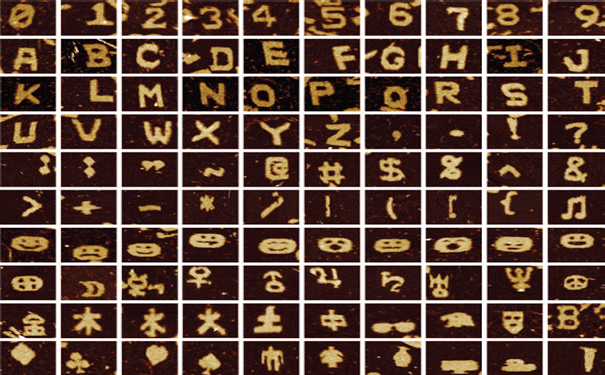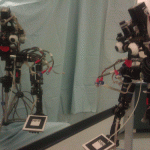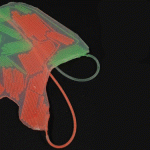
100 self-assembled DNA shapes. Image: Peng Yin, Wyss Institute
Artistically crafted nanotechnology could enable the development of new tools to deliver drugs directly into disease sites in the body.
Sometimes in science an elegantly designed experiment just makes you smile with awe-inspired amazement. This was definitely the case with a recent study from the Wyss Institute for Biologically Inspired Engineering at Harvard University, where researchers have built tiny intricate shapes out of single stranded tiles (SSTs) of DNA — a technique that is as much art as it is cutting edge technology.
Building complex nanostructures out of DNA has been done for years using a method called DNA origami. This involves the use of a single long strand of DNA, acting as a scaffold along which smaller strands attach at different segments to create precise shapes. The problem with DNA origami is that using a very long single DNA strand can be a complicated and cumbersome process. Additionally, the long strands of DNA typically come from viruses, which raises the possibility that the immune system will attack any medical device made from the material as soon as it enters the body. With these factors in mind, the researchers of the current study designed a simple, robust and versatile alternative by focusing on the use of short strands of synthetic DNA “building blocks” and avoiding long scaffold strands.
The research team, led by Peng Yin from Harvard Medical School, developed a “molecular canvas” out of an SST rectangular lattice, which looks like a miniature brick wall — 64 by 103 nm in size. In the canvas each DNA block — or pixel — is attracted to specific corresponding base domains in four neighbouring blocks. The scientists then designed over 100 shapes — including letters, Chinese characters and emoticons — out of short strands of self-assembling DNA. They did this via an annealing process of all the DNA strands that correspond to the pixels covered by the target shape.
While writing little characters in DNA is in itself not very useful, Michael Cortie from the Institute for Nanoscale Technology at the University of Technology (UTS) expects in time the technique will prompt people to create more complex and functional nano-shapes out of DNA to be used in a number of medical applications.
“This is a stunningly elegant demonstration of the power of DNA,” said Cortie, who was not involved in the study. He believes the research is far ahead of anything else published so far in this field.
An important feature of the SSTs designed by Yin and the team is that they are a synthetically based material. This means they can be made highly biocompatible and used to ferry drugs to specific disease sites without breaking down in the body before they reach the target location.
The researchers suggest that although several novel approaches for creating complex nanostructures out of self-assembling DNA exist, there is still a vast design space that remains to be explored.
Source: Nature






